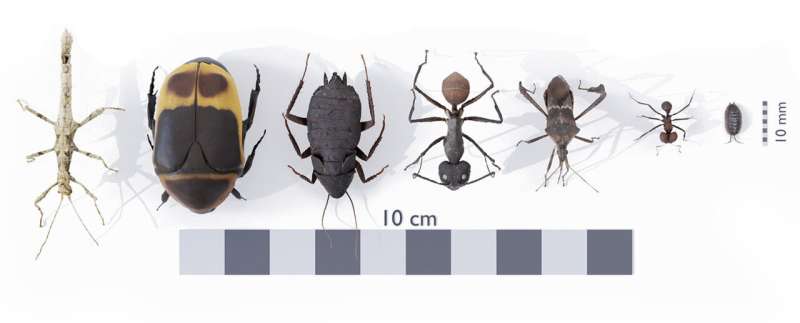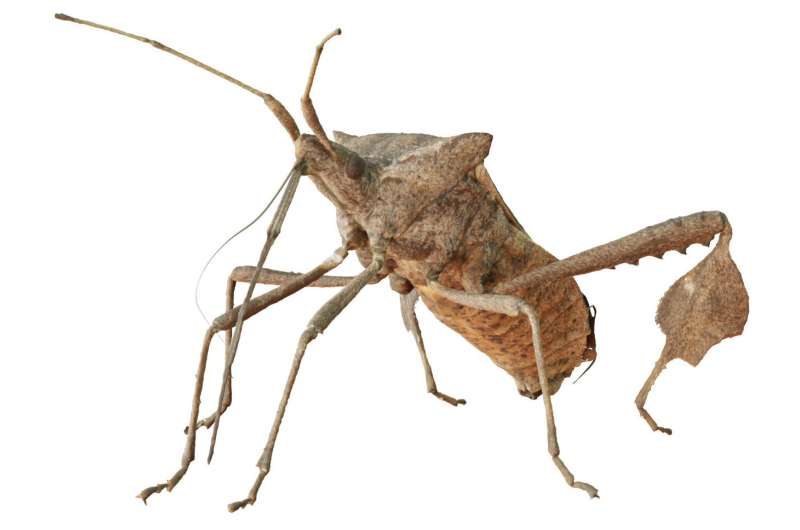Animals immortalized in 3D by affordable scanner technology

A new 3D scanner, which photographs small animal specimens in meticulous detail, is also being used to teach computers how to spot and track critters.
The technology, which helps to create 3D models of small animals like insects, will allow researchers to study valuable museum specimens without the need to be physically present, and is being used to train AI to detect and track animals in nature.
Termed scAnt, the scanner could help researchers and museums display, share, study, and protect their physical specimens by creating digital 3D models, or 'digital twins." It is made from generic and 3D printed components, costs about €200 to put together, and all software and technical drawings are freely available, meaning anyone can build and operate one. The details are published today in PeerJ.
Creating 'digital twins' of the critters could also hedge against damage and loss of specimens for museums and researchers.
Next level of digitization
Lead researcher on the project Fabian Plum, from Imperial's Department of Bioengineering, said: "Natural history collections house millions of insects which are of immeasurable value to the scientific community. However, they can generally only be studied on-site as they are often too fragile to be sent via post.
"While significant efforts are underway to digitize these collections in 2D, these photos capture only a fraction of the relevant information. Our 3D scanner could take digitisation of animal collections to the next level by creating 3D models of specimens in great detail."
The cocoon-shaped scanner, which contains lights and a camera, closes around the specimen which is held in place on a pin that can rotate about two axes. Users can configure the scanning process on a computer and the scanner automatically moves the specimen so the cameras capture the critter from every angle. The images are then combined to create realistic 3D models, ready to be shared across the globe.
Spotting real-life 'twins'
Researchers can also define individual 'bones' and joints in these 3D models, and virtually move and pose the specimens in 3D environments to create 'synthetic' datasets. These datasets are then used to train machine learning algorithms to spot and analyze the real-life twin in nature.
Co-researcher Dr. David Labonte, also from the Department of Bioengineering, said: "Synthetic datasets can be unlimited in the number of individuals, lighting levels, and camera perspectives, so they allow us to train deep neural networks much more robustly than is achievable with hand-labeled training data."
The researchers say the technology opens a wealth of opportunities for large-scale behavioral studies, even under challenging field conditions. This could include automatic detection and tracking of animals in their natural environments without the need for labor-intensive manual labeling.

They are particularly interested in using this tool to study insects that live in complex societies, such as leafcutter ants. By automatically identifying and tracking ants in the field, researchers hope to understand how these ants have become such notorious pests throughout the neotropics.
Immersive experiences
During the COVID-19 pandemic, where in-person visits are limited, online digital 3D scans could also help virtual museum visitors to create an immersive natural science experience that can be enjoyed from anywhere.
The researchers say the technology could also help museums make full use of the millions of specimens that cannot be displayed due to limited exhibition space.
They have made the code plus manufacturing and assembly instructions available freely online, so that the scanner can be built at home.
More information: Fabian Plum et al. scAnt—an open-source platform for the creation of 3D models of arthropods (and other small objects), PeerJ (2021). DOI: 10.7717/peerj.11155
Journal information: PeerJ
Provided by Imperial College London





















